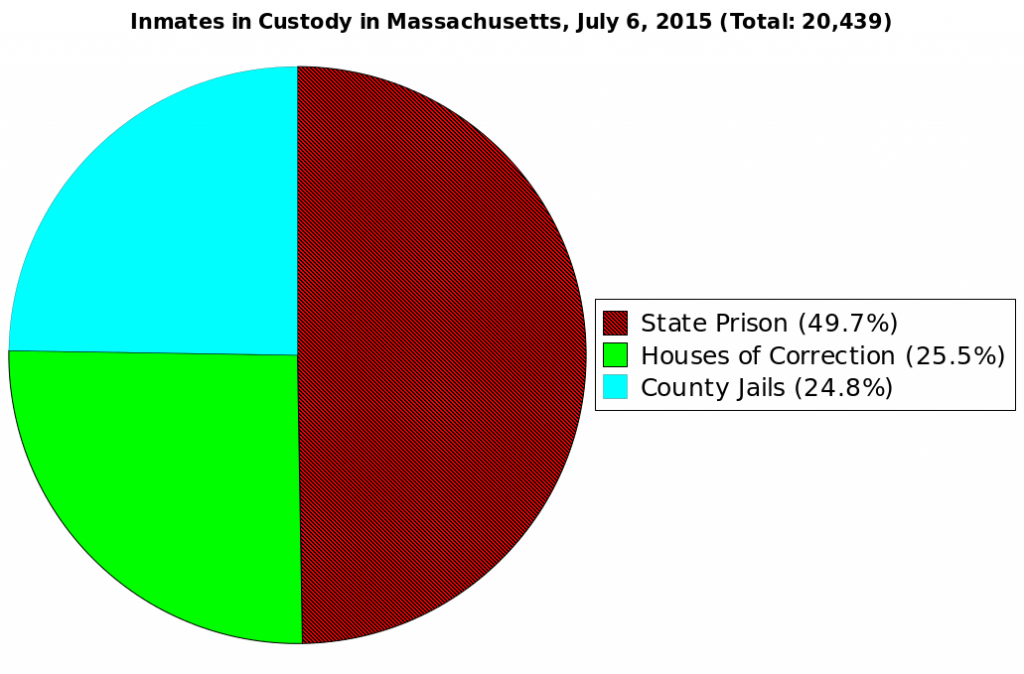 Massachusetts has a two tier correctional system. The state Department of Corrections manages the Massachusetts Correctional Institutions across the state. The MCI system is collectively referred to as state prison; convicted persons can be sentenced up to life in state prison. The County Houses of Correction, where the maximum sentence length is 30 months, are managed by elected Sheriffs.
Massachusetts has a two tier correctional system. The state Department of Corrections manages the Massachusetts Correctional Institutions across the state. The MCI system is collectively referred to as state prison; convicted persons can be sentenced up to life in state prison. The County Houses of Correction, where the maximum sentence length is 30 months, are managed by elected Sheriffs.
The county Houses of Correction are subject to inspection by the Department of Corrections, must meet standards set by the Department of Corrections and must report headcounts to the Department of Corrections. Nonetheless, historical data and analytic data for the population in the Houses of Correction are much less available than for the state prison.
The following facts are clear from available reports:
- Like the state prison population, the HOC population rose sharply through the 80s (see the BBA Task Force Report, page 13).
- Like the state prison population, the HOC population continued to grow into the 90s (see the Sentencing Commission Report, page 47).
- The sentenced HOC population has dropped more sharply from its peak than the DOC population — 36% from 2004 to 2015 (statistic supplied by the Trial Court office of Research and Planning).
- As of the July 6, 2015 weekly count sheet, the HOC custody headcount was 5216. Note that the county facilities house another 5,059 inmates on pre-trial status in their jails — these pre-trial inmates may end up in either a House of Correction or state prison. The state prison custody headcount is 10,164. The Houses of Correction have custody of 331 inmates sentenced to state prison.
- Although the HOC headcount has been comparable in magnitude to DOC headcount (at peak higher, now lower), turnover is much higher in the Houses of Correction, because of shorter sentence lengths. In 2008 (the last year published in a report series on commitments), the Houses of Corrections received 16,149 commitments, while the Department of Corrections received only 3,319 commitments.
- Because of high turnover, the HOC population is more sensitive to legislative policy changes. For example, according to the BBA Task Force Report at page 15, OUI Commitments to the Houses of Corrections jumped dramatically in 1982 and 1983. Those jumps coincide with the mid-1982 passage of Chapter 373 of the Acts of 1982, An Act Increasing the Penalties for Operating a Motor Vehicle While Driving Under the Influence of Intoxicating Liquors.
